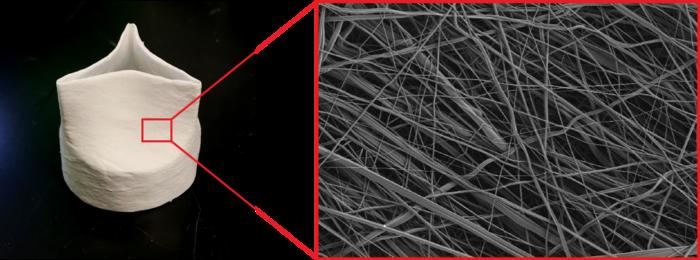Researchers from Harvard University, Massachusetts, successfully manufactured an artificial heart valve in less than 10 minutes. After implantation into two sheep, the heart valve started working immediately, while the method is known as “Focused Rotary Jet Spinning”. Hence, the researchers used air jets to direct liquid polymer into a valve-shaped frame. The entire paper is published in Matter.
The heart valves are manufactured by three overlapping “leaflets”, which open and close with every heartbeat, meaning that they are able to fully open to allow blood flow, and fully close to prevent the blood from flowing backward.
In the research announcement, this technique is described as “a cotton-candy machine with a hair dryer behind it”. As said by the Harvard bioengineer and one of the first authors of the work Michael Peters, “We can create really small fibres – on the nanoscale – that mimic the extracellular matrix that heart valve cells are used to living and growing inside, and we can spin full valves in a matter of minutes, in contrast to currently available technologies that can take weeks or months to make.”
The valves’ strength, elasticity, and ability to open and close were tested using a pulse duplicator, a heartbeat-simulating machine. Peters added that “A normal heart valve functions for billions of cycles throughout one’s life, so they’re constantly being pulled and stretched and stimulated,”, and that “They need to be very elastic and retain their shape despite these mechanical stimuli, and they also have to be strong enough to withstand the back pressures from blood trying to flow backwards.” Sheep were chosen as animal models, as the physical forces inside the heart are similar to those in humans. The valves effectively controlled the blood flow for over an hour, and their position was monitored by an ultrasound. However, the researchers mentioned that long-term studies are required to test the endurance of the valves, and they plan to test the performance of the valves in more sheep and over a longer duration.
Article & Image Source: EurekAlert
Image Credit: Sarah Motta, Michael Peters, Christophe Chantre at Harvard University






